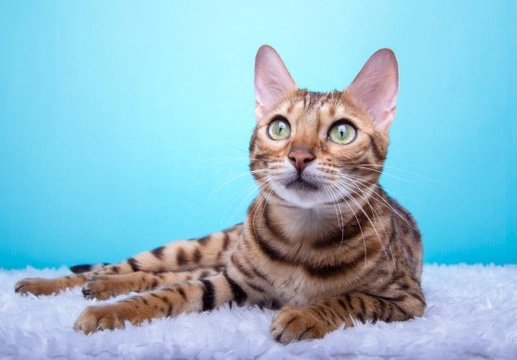
Urinary Tract Blockages in Cats
Blockages of the urinary tract or obstructions within the urethra can cause a problem in cats that leads to straining to pass water, or straining without success, or only producing a little bit of urine each time. This can be caused by a range of issues including a physical blockage of the urethra, inflammation causing it to narrow, or something compressing the urethra itself.
How problematic the condition is will depend on a range of factors, as will the treatment available and the ultimate prognosis. All cat owners should be aware of the signs of a urinary tract blockage, and in this article we will look at the condition in a little more detail, to help you to know how to identify a problem and what to expect.
The causes of urinary tract blockages in cats
The build up of mineral deposits within the urinary tract can lead to the formation of crystals in the urine, which can cause stones that lead to an obstruction. Tumours, cuts and the build up of scar tissue can all cause an obstruction as well.
Urinary disease, which is more common in female cats than males, can lead to a blockage, as can prostate disease in the male cat.
What cats are most likely to be affected by a urinary tract blockage?
Generally, older cats are more prone to the condition than their younger counterparts, and male cats are slightly more likely to be affected than females. Cats fed on a dry only diet may be more susceptible to the condition than cats fed a combination or wet only diet, as their overall water intake will tend to be lower.
Symptoms of a problem
If your cat always goes to the toilet outside, it might be some time before you become aware of the problem, as you will not generally be there to observe your cat urinating. It can be a good idea to provide a litter tray within the home now and then, purely to try to observe your cat going to the toilet, and so that you can spot any obvious problems with the urine or stools produced.
If you are able to observe your cat going to the toilet, straining to urinate is usually the first indication of a problem, which usually means that your cat will take a long time to pee, and attempt to urinate repeatedly with little or no success.
This can be easily mistaken for constipation, as your cat will take on a hunched-up, uncomfortable stance when trying to pee.
The urine itself that is passed may appear to be low in volume, and may appear particularly dark-coloured and strong smelling. It may also be rather cloudy looking, and possibly be tinged with blood.
Straining to pass urine or crystals and bladder stones is rather painful, so your cat may actually show signs of pain such as crying when urinating, and they may also become generally depressed and possibly go off their food. Veterinary treatment is vital for urinary blockages or symptoms that indicate a blockage might be present, as the condition is very painful and will not resolve itself, and will also lead to eventual renal failure if untreated, sometimes within just a few days.
Diagnosing a urinary blockage
When you take your cat along to the vet, they will palpate the abdomen and run blood and urine tests to confirm their diagnosis, and check for any renal damage or the onset of renal failure. Throughout the course of treatment, additional blood and urine samples will be taken to see how effective the treatment is proving to be, and possibly, x-ray analysis or an ultrasound scan will also be needed to show if there is a physical blockage in place that will require surgical treatment.
Treatment options
If a physical obstruction is detected within the urethra, this must be removed as soon as possible. There are various ways that this can be done, including a surgical procedure under a general aesthetic, or by means of fluid flushing and manually palpating the abdomen to encourage stones or blockages to pass out naturally.
IV fluids are usually administered throughout treatment, to provide hydration and also aid with the flushing out of the bladder and urethra. As a urinary tract blockage can also cause possible kidney damage, electrolyte therapy, fluid therapy and pain medications are also commonly used too.
Once a cat has suffered from bladder stones or blockages once, they are exponentially more prone to developing the condition again in the future, so cat owners must monitor their pets carefully for the signs of any recurrence. This may mean providing an indoor litter tray so that you can keep an eye on the cat’s ongoing urinary health, and making changes to the diet to support better hydration and to minimise the formation of urinary crystals in the future.



